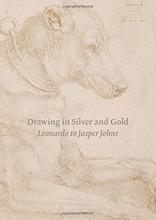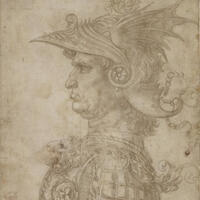More about Alphonse Legros
- All
- Info
- Shop
Works by Alphonse Legros

Sr. Editor
Alphonse Legros is a great example of how historians like to put artists into neat little boxes.
The second of seven children by an accountant and the daughter of a mechanic from Dijon, France, Alphonse Legros rose from a lower-middle class upbringing to the heights of fame in the art world, before being largely forgotten or ignored by scholars of later generations.
Taking art up as his trade early in life, Legros studied at the School of Fine Arts in Dijon, using farmworkers and other local laborers as his models. After completing his education, Legros moved to Paris where he worked as a decorator and set painter for the theater (working amongst the actors, he also found he had a talent for “histrionic mimicry”). In his spare time he studied drawing, and spent his days copying art at the Louvre, along with his friend and fellow student Henri Fantin-Latour. His replication of Hans Holbein's portrait of Erasmus from memory wowed his teacher, and landed him a job in his studio.
In 1858, Legros, Fantin-Latour, and James McNeill Whistler formed the “Société des Trois” (Society of Three), though their styles differed so much the group was more about comradery and helping each other professionally than touting any specific aesthetic manifesto. This might be why discussions of the burgeoning avant-garde in Paris at the time often overlook the Société des Trois in favor of the Impressionists. And though Legros was included in the famous “Salon des Refusés” exhibition of artists rejected by the more conservative official Salon, the Salon did also accept some of his works, so his art may be seen as too “traditional” to be considered progressive.
Another reason the group, and Legros specifically, might be ignored is that even though the European art world was internationalizing at the end of the 19th century, with travel becoming more accessible, the art market still relied on categorizing art by nationality in order to promote it to collectors across the continent. Similarly, art historians continue to rely on these categorizations to compose a logical narrative of the timeline of art. Though he started as a member of the Parisian avant-garde, Legros moved to London in 1863. That Legros’ artwork can’t be easily categorized as British Victorian or French avant-garde might be a reason for his relative obscurity.
In London, Legros befriended Dante Gabriel Rossetti, who introduced him to many of his own patrons. Finding great success in England, Legros essentially “became British" by marrying an English woman with whom he had 9 children. Then again, Legros notoriously refused to speak English. So, even in his personal life he did not really fit the bill as wholly English or fully French.
One final reason historians argue Legros has been omitted from the history books is that he was unfashionably and sincerely religious. When studying the rise of modernity and progressive art, the secular academic world may have been wary of an artist who was embracing traditional religious themes in their work.
Though Legros was wildly popular and successful in his lifetime (he even counted Charles Baudelaire as one of his supporters), his work fell out of favor in subsequent years, possibly for some of the reasons listed above. Luckily, art historians and diehard Legros fans of this generation are angling for redemption, and there is renewed interest in Legros as an emblem of the transnationality of art movements, fueled by a desire to break down the rigid categories that may have been imposed upon this very talented artist.
Sources
- Baetens, Jan Dirk, and Dries Lyna. "INTRODUCTION: Towards an International History of the Nineteenth-Century Art Trade." In Art Crossing Borders: The Internationalisation of the Art Market in the Age of Nation States, 1750-1914, edited by Baetens Jan Dirk
- Holroyd, Charles (1912). "Legros, Alphonse.” Dictionary of National Biography (2nd supplement). London: Smith, Elder & Co., 1912.
- Prettejohn, E. (2021), “The Scandal of M. Alphonse Legros.” Art History, 44: 78-107. https://doi.org/10.1111/1467-8365.12545
Featured Content
Here is what Wikipedia says about Alphonse Legros
Alphonse Legros (
French pronunciation: [alfɔ̃s ləɡʁo]; 8 May 1837 – 8 December 1911) was a French, later British, painter, etcher, sculptor, and medallist. He moved to London in 1863 and later was naturalized as British. He was important as a teacher in the British etching revival.
Check out the full Wikipedia article about Alphonse Legros













